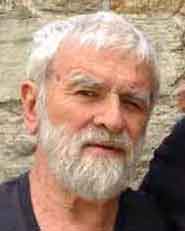Aristotle made the observation that nature abhors a vacuum. I want to extend this by saying that minds abhor a vacuum of beliefs. As I was listening to Jordan Peterson saying that there surely must be an evolutionary benefit to religious stories, it struck me that he is probably right but at the wrong level. He seems to be claiming that there is some evolutionary benefit to particular stories and rituals. By contrast, I would like to claim that even on the animal level — of say cats, there is a benefit in constructing a map of the world. I don’t know how to talk about the behavior of cats and other animals without invoking the language of perception, desires, and beliefs. C.D. Broad introduced the concept of a “quasi-belief” which he explained as trying to understand the behavior of an animal or a human on the model, analogy, or fiction of a belief. In other words, to say that an animal or a human has a quasi-belief, is just another way of expressing the idea that the animal or human is acting “as if” it had the belief.
I would like to advance the hypothesis that in some animals there is an innate drive to construct a quasi-Weltanschuung. For example, I have a cat, and I believe that it has formulated a complete picture of its proximate environment — the interior of our house. At first the cat was relatively slow in moving around the house; but now it moves around the house with speed and confidence, and it seems to know the properties of the objects it encounters. Furthermore, it has a picture of the house composed of substances and causal properties — perhaps we can call them quasi-substances and quasi-causes. In my Ph.D. dissertation, I called this view Animal Realism.
I bring up the powers of the cat to point out the evolutionary powers which we share with the cat in addition to our conceptual powers embodied in our mastery of language. What am I driving at? Just as the cat can and does map the house, we also have the ability, but more than an ability — we seem to have a drive to map and explain our universe. This drive is aided by imagination. I am saying that we have a drive to have beliefs about the workings of the whole universe, and this drive is such that what we do not know by experience, we supplement with imagination. This work of the imagination is called myth and religion. Now, we would now call it the ability to form scientific hypotheses.
I am as skeptical about the evolutionary benefits of particular mythical beliefs, as I am of initial scientific hypotheses — i.e., until they have failed refutation.
I make no claims about the origin of our conceptual abilities, but judging by the nature of myths, I think that Wilfrid Sellars was right in postulating for humans an Original Image — a Weltanschauung in which everything is a person. If animism is the view that everything in the universe is alive, then Sellars is a radical animist in making a more specific claim that everything is a person. And I think that it suffices to say that such a power of imaginatively constructing a Weltanschauung is an evolutionary endowment of man, without having to resort to the additional burden of explaining particular myths in evolutionary terms.
If there is this drive in humans to have a total world view, it would explain the proclivity of people to utter bullshit. They cannot help it. They always will give you some answer as an explanation. President Trump is almost the perfect example of this. The man is obviously quite ignorant of many things, but when asked he never says “I don’t know.” Instead he makes up an answer on the spot without any qualms about the truth. He is a bullshitter as described by Harry Franfurther. Apparently it takes some sophistication and courage to say “I don’t know.”
